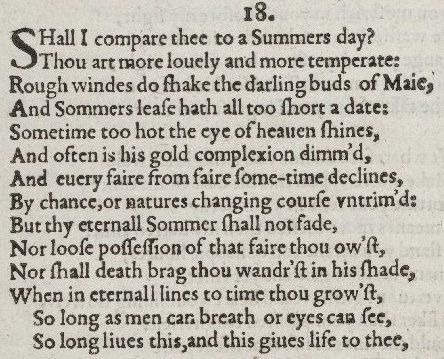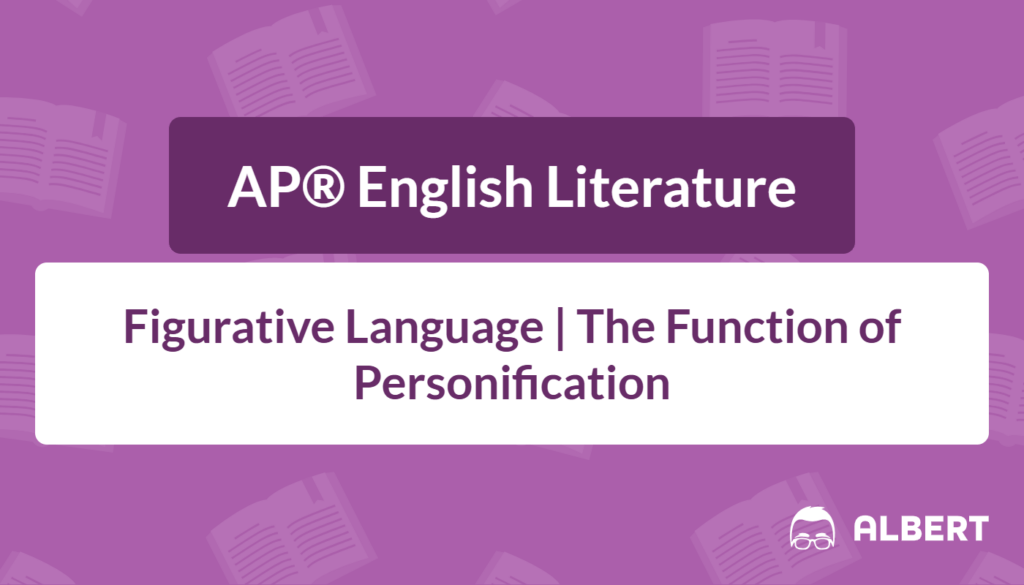What We Review
Understanding Personification in Literature
Figurative language plays a crucial role in elevating a literary text from simple storytelling to a vivid and meaningful experience. Among these techniques, personification stands out for the way it breathes life into everyday objects, natural elements, and even abstract ideas. Recognizing this device is valuable when writing essays for the AP® Literature exam because it reveals how authors create mood, symbolically reflect characters’ emotions, and underscore larger themes. Below is a closer look at what personification in literature is, how it functions, how to identify it, and how it appears in various genres.
What Is Personification in Literature
To understand personification definition in literature, consider it as a figurative language device that assigns human characteristics, such as feelings, behaviors, or intentions, to non-human entities. Often, a poet might depict the wind as “whispering,” or a novelist might describe guilt as “gnawing” at a character’s mind. Authors throughout history have used personification in poetry, plays, and novels to enhance imagery and create emotional resonance.
Because the roots of personification stretch back to ancient oral traditions and classical texts, it has become a timeless tool in storytelling. In each era, writers have relied on it to paint landscapes or explore the complexities of the human condition. Its constant presence across literary movements and genres illustrates its importance for enriching the emotional depth of a piece and guiding readers to interpret layered meanings.
The Function of Personification
Readers often remember intricate comparisons and human-like details more vividly than straightforward descriptions. Therefore, the main purpose of personification is to:
- Draw readers into the narrative by giving objects, ideas, or nature a human voice.
- Shape the tone and enhance theme by reflecting the protagonist’s state of mind or the world’s emotional undercurrent.
- Help the audience visualize abstract concepts—such as fate, death, or desire—as tangible entities that interact with characters.
In addition, personification in poetry frequently forms the backbone of the poem’s atmosphere. By giving an autumn breeze the power to “mourn” or describing a candle “flickering in protest,” poets transform nature and everyday details into active participants in the unfolding story. This subtle transformation can guide readers toward deeper awareness of an emotion or an impending change in the plot.
Identifying Personification
When searching for personification examples in a text, a few indicators can make the process simpler:
- Look for verbs or actions that typically belong to human beings but are assigned to non-human subjects.
- Examine descriptive language—if an object is given human emotions or physical traits, it might be personification.
- Pay attention to figurative phrases. Metaphors and similes sometimes rely on personification to heighten emotional impact.
In short fiction, personification often appears in descriptive passages. However, in a longer novel, it might emerge in the character’s inner monologue. When reading poetry, scan for lines that label natural forces with human capabilities or desires.
Examples of Personification
Example 1: Personification in Poetry
William Shakespeare’s “Sonnet 18” shows how a poet can personify an abstract concept. In one line, the speaker declares, “Nor shall Death brag thou wander’st in his shade.” Here, Death is acting like a boastful character, a presence that can “brag” about holding power over the poem’s subject.
Step-by-step explanation
- Observe how the abstract force—Death—is described as having the human ability to brag.
- Notice how this characterization elevates the poem’s emotional stakes. Death is not just an event but a rival figure threatening to claim the beloved.
- See how the poet underscores the strength of love by suggesting it can defy or outlast Death’s influence. This connects to a broader theme of mortality’s limits, emphasizing the permanence of written verse versus the transient nature of life.

Example 2: Personification in a Novel
In William Golding’s Lord of the Flies, the island itself often seems to take on a threatening personality, reflecting the boys’ descent into savagery. At one point, the narrator describes the forest as “a place of bright and evil faces,” where “the shadows seemed to reach out like living fingers.” The natural environment is not simply a backdrop but an active force that seems to watch, menace, and respond to the boys’ actions.
Step-by-step explanation
- Notice how the forest and shadows are given human-like qualities—faces and fingers—that suggest awareness and intent.
- This personification heightens the novel’s atmosphere of fear and suspense, emphasizing how the boys’ internal chaos projects onto the natural world.
- The threatening environment mirrors the novel’s themes of lost innocence and the primal instincts lurking beneath civilization’s surface. By animating the landscape, Golding deepens the connection between character psychology and setting.
Example 3: Personification in Short Stories
In William Faulkner’s “A Rose for Emily,” the decaying house where Emily Grierson lives is described as having “an eyesore among eyesores,” “lifting its stubborn and coquettish decay above the cotton wagons and the gasoline pumps.” The house is personified as stubborn and coquettish, almost a character itself resisting change and reflecting Emily’s own refusal to adapt to the modern world.
Similarly, in Shirley Jackson’s “The Lottery,” the black box used for the town’s annual lottery is described with almost human qualities—“shabby” and “splintered badly” but still “sacred.” The box’s worn appearance contrasts with the community’s ritualistic reverence, giving the object a mysterious presence that symbolizes tradition’s power to control human behavior.
Step-by-step explanation
- In “A Rose for Emily,” the house’s personification connects to themes of decay, resistance to change, and isolation, illustrating how setting reflects character and social commentary.
- In “The Lottery,” the black box’s almost living presence embodies the dangerous weight of blind tradition, enhancing the story’s tension and thematic critique of conformity.
- Both examples use personification to deepen the symbolic meaning of objects and places, encouraging readers to explore the stories’ broader messages about human nature and society.
The Impact of Personification
Figurative language, including personification, shapes a reader’s relationship to themes, characters, and settings. It creates empathy for the human condition by allowing readers to see reflections of emotions in the world around characters. Furthermore, it adds variety and depth to the text’s imagery—whether it is a storm “raging against the earth” or guilt “weighing down a character’s mind.”
This tool also shifts how readers interpret major symbols. A single animated detail can suggest that objects or ideas are driving forces. For instance, a whispering forest may symbolize a powerful ancestral tradition, guiding characters toward self-discovery. The interplay of such symbolic qualities often becomes a major discussion point for the AP® Literature exam, as it invites deeper exploration of message, conflict, or character development.
Quick Reference Chart
Below is a chart with key terms frequently encountered when discussing figurative language and personification in literature:
| Term | Definition |
| Personification | Giving human qualities, feelings, or actions to non-human objects or abstract concepts. |
| Figurative Language | Words or phrases that depart from literal meaning to add emphasis, freshness, or clarity. |
| Imagery | Descriptive language that appeals to the senses, painting a mental picture for the reader. |
| Tone | The author’s attitude or emotional coloring of the text, conveyed through style, choice of words, and mood. |
| Theme | The central or underlying idea in a literary work, often exploring universal topics and human experiences. |
Conclusion
Personification breathes vitality into writing, drawing readers closer to characters and ideas. By granting human attributes to inanimate or abstract elements, authors highlight emotional responses and deeper thematic dimensions. Recognizing personification in texts—whether in poetry or prose—can sharpen analytical skills and strengthen essays on the AP® Literature exam. Its power lies in letting readers see the world through a more vivid and empathetic lens. Mastering this technique not only enriches comprehension but also prepares students to uncover nuanced meanings in any literary work.
Sharpen Your Skills for AP® English Literature and Composition
Are you preparing for the AP® English Literature and Composition test? We’ve got you covered! Try our review articles designed to help you confidently tackle real-world AP® English Literature and Composition problems. You’ll find everything you need to succeed, from quick tips to detailed strategies. Start exploring now!
- AP® English Literature: Figurative v. Literal Language
- AP® English Literature: Word Choice
- AP® English Literature: Symbolism in Literature
- AP® English Literature: Imagery in Literature
- AP® English Literature: Simile in Literature
- AP® English Literature: Metaphor in Literature
- AP® English Literature: Allusion in Literature
Need help preparing for your AP® English Literature and Composition exam?
Albert has hundreds of AP® English Literature and Composition practice questions, free response, and full-length practice tests to try out.








